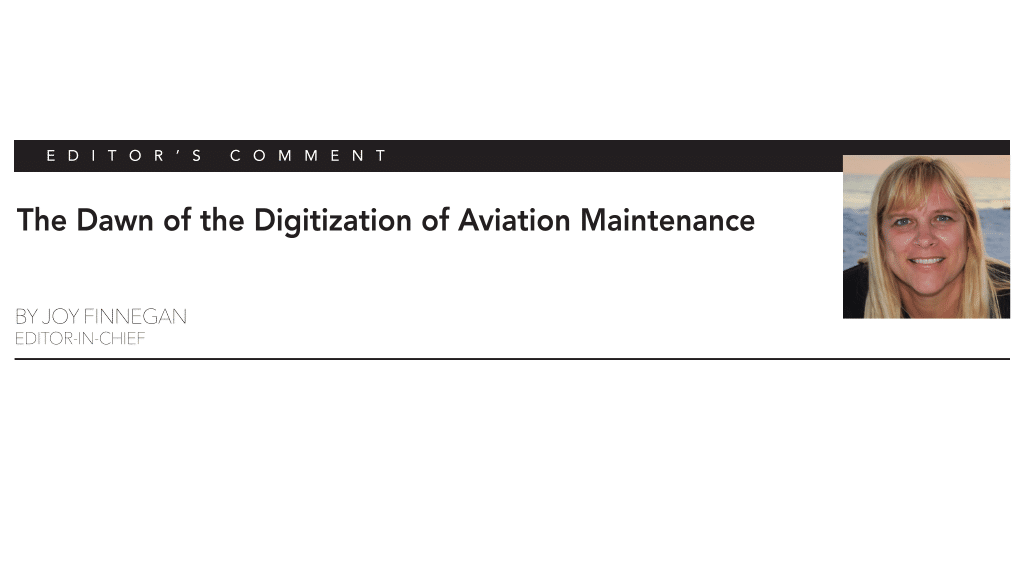As we enter the holiday season and speed toward the new year, 2025, I wanted to take a moment to recap some interesting developments in the aviation maintenance business this past year.
After the pandemic, air travel rebounded fast. Pent-up demand to travel whether to see family, to see clients for business or simply to explore the world and have fun, was enormous. It has shown no signs of slowing down yet either, and perhaps even continued growth. MRO spending is projected to reach record levels, and managing costs and operations efficiently is more challenging than ever.
At the same time, even before 2020, inklings of a true shortage of aircraft mechanics in the workforce was becoming reality. A large portion of certified A&P mechanics is retiring or nearing retirement, intensifying the need for recruitment and upskilling of new talent. The confluence of these happenings made the mechanic shortage clear and top of mind for all.
Redoubled efforts by everyone in aircraft maintenance to reach out to youth and try to entice them into the industry started happening. High school and community college outreach to funnel kids into the technical trades is happening and many are doing a great job of it. But it takes a long time to fill that pipeline and see the fruits of that labor turn into truly qualified, experienced workers in the form of A&P mechanics on the hangar floor.
Retention and attrition are issues. Wages in the industry need to rise to meet this demand and the sector struggles to retain qualified technicians due to competition from other industries and the complexity of modern aircraft systems.
Aircraft increasingly rely on sophisticated electronics, emphasizing the demand for technicians skilled in avionics and software, along with more traditional mechanical expertise. These skills gaps are challenging the industry as well and will continue to do so for years to come as retirements increase and new, inexperienced workers enter the workforce.
These truths have spurred shifts in the aircraft maintenance industry, and it has begun to look to technological innovations as they can assist in these evolving workforce dynamics like never before.
Technological advancements are helping the aircraft maintenance industry in multiple ways, but most importantly as force multipliers. Programs for predictive maintenance, driven by huge fonts of data, are helping enable operators to anticipate and address maintenance needs, improving cost efficiency and reducing aircraft downtime.
One cool development that is being embraced these days is the use of drones in the hangar. Drone technology is increasingly used for inspections, making maintenance quicker, safer and more thorough by accessing hard-to-reach parts of the aircraft. You can read about one use case for drones in our story on dent checking, starting on page 42.
Perhaps you have seen or read about the integration of augmented and virtual reality (AR/VR) in our niche market. These tools promise to enhance training, repair accuracy and reduce reliance on manual inspections, which will eventually — hopefully — lead to increased safety and speed of service. The promise is there and now we need to see how it will play out.
What about AI — artificial intelligence? Will that be integrated even more deeply into the daily lives of maintainers, planners and related areas like operations? After all, it is a key component of predictive maintenance, the use of which is going to be crucial going forward. Other nuanced areas where AI will be key are condition monitoring, fault diagnosis and data analytics. Yes, there are legitimate concerns about the implications of AI use in aviation maintenance. But proactive measures can and must be taken to mitigate risks and maximize the benefits of AI technology to ensure safe and efficient aircraft operations.
Every maintenance operation is concerned with compliance. Modern digital solutions must come with the ability to meet regulatory requirements more efficiently. Robust security features will also be key. These can help companies protect sensitive data and avoid legal issues.
The convergence of technology adoption and labor strategies is critical for the future competitiveness and continued safety of the aviation industry. Embracing these changes offers opportunities for innovation but requires strategic investments in workforce development and technological integration.
Some say technological adoption remains slower in the maintenance sector than other areas of aviation due to regulatory and business challenges. But investment is clearly on the rise as companies seek to streamline operations through digital tools and process innovations.
Embracing technology also comes with challenges such as costs, cybersecurity risks and potential resistance to change. Companies must carefully plan and manage their digital transformation efforts to ensure they align with their overall strategy and receive buy-in from employees. But our industry must embrace it.
Those that embrace technology and digitization will gain the competitive advantage by becoming more efficient, utilizing data-driven decision-making and becoming more agile, all of which will lead to better customer experiences. Better customer experiences will lead to repeat customers and continued full hangars.
The dawn of the digitization of aviation maintenance is upon us.
